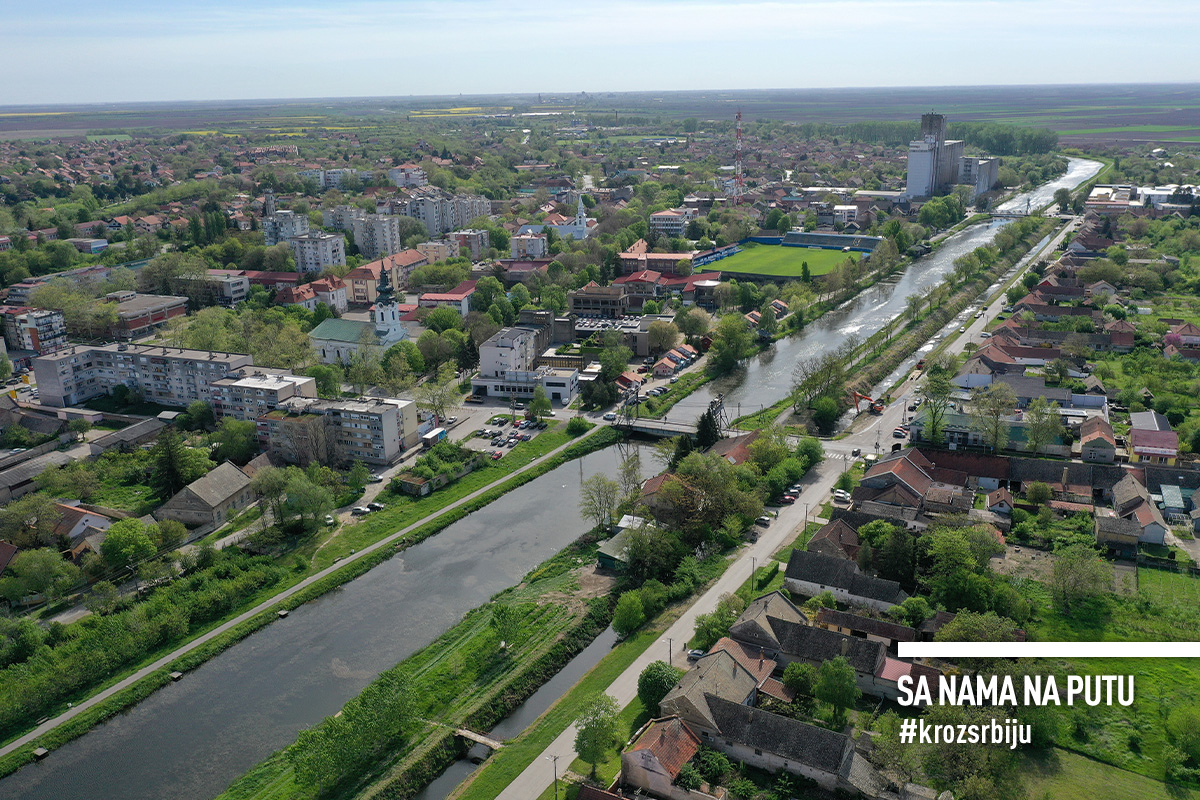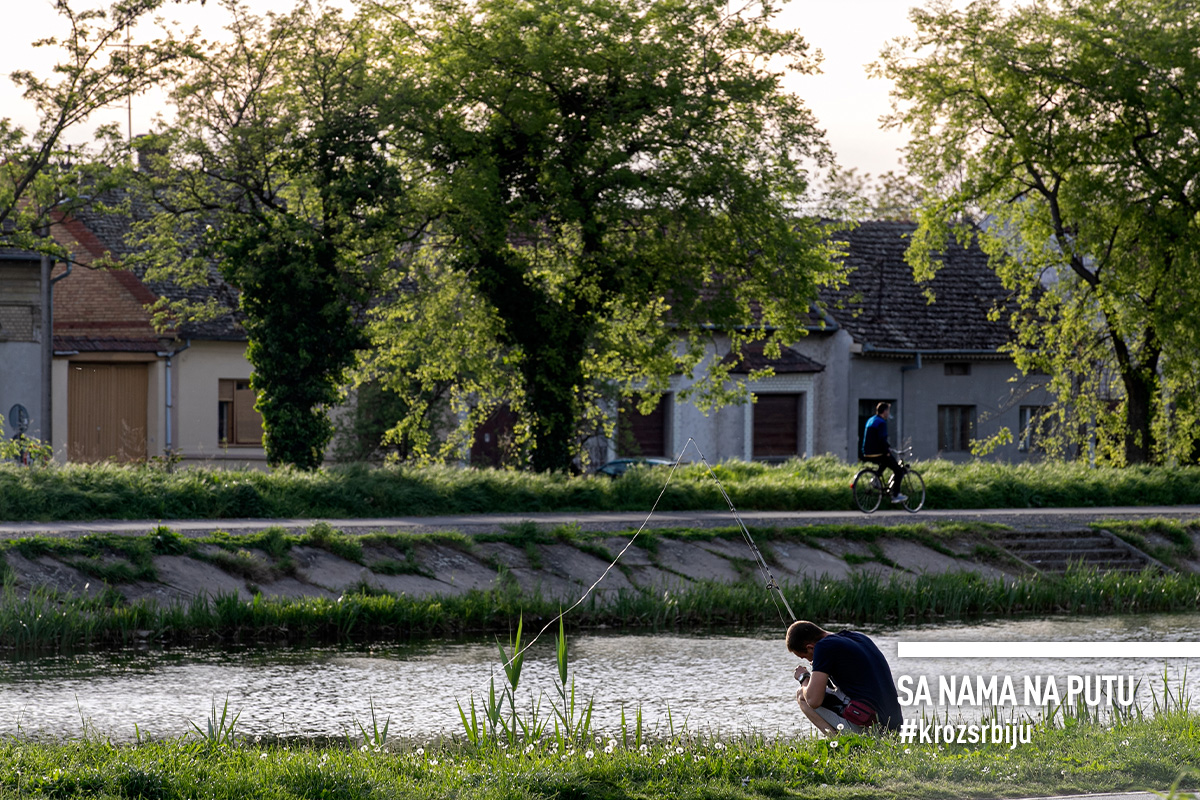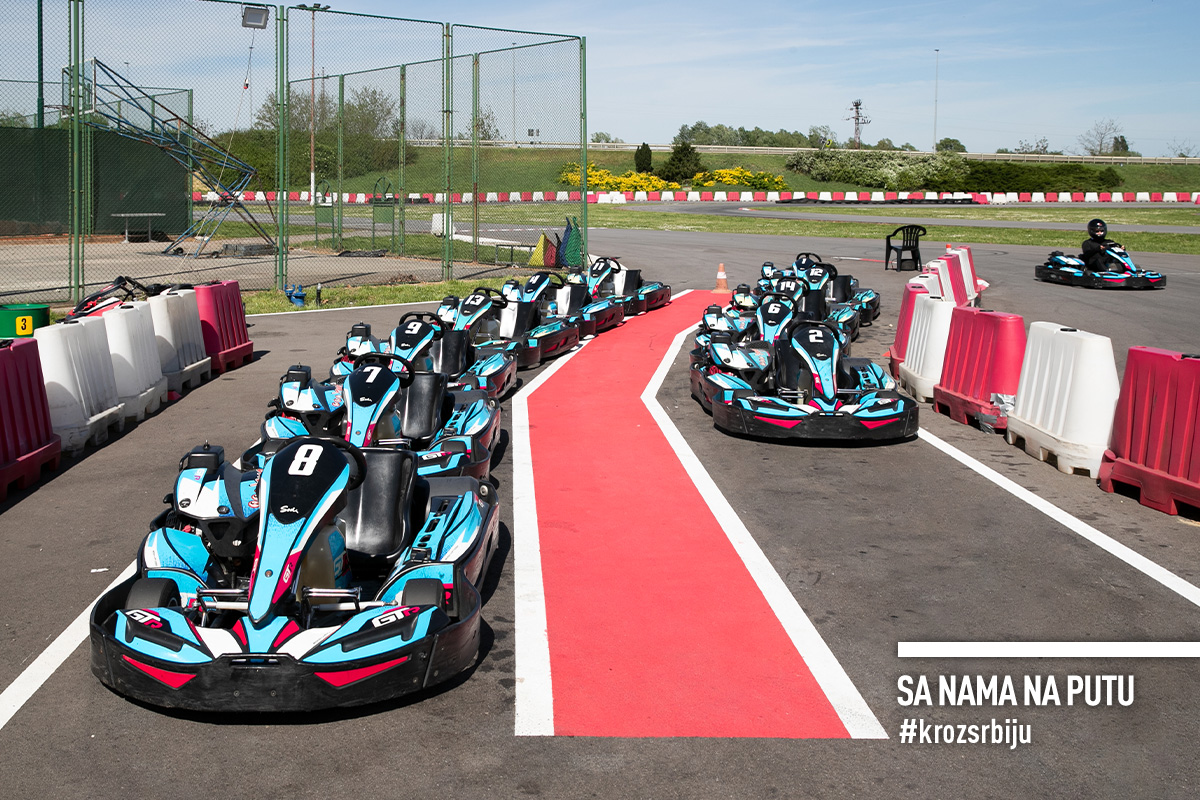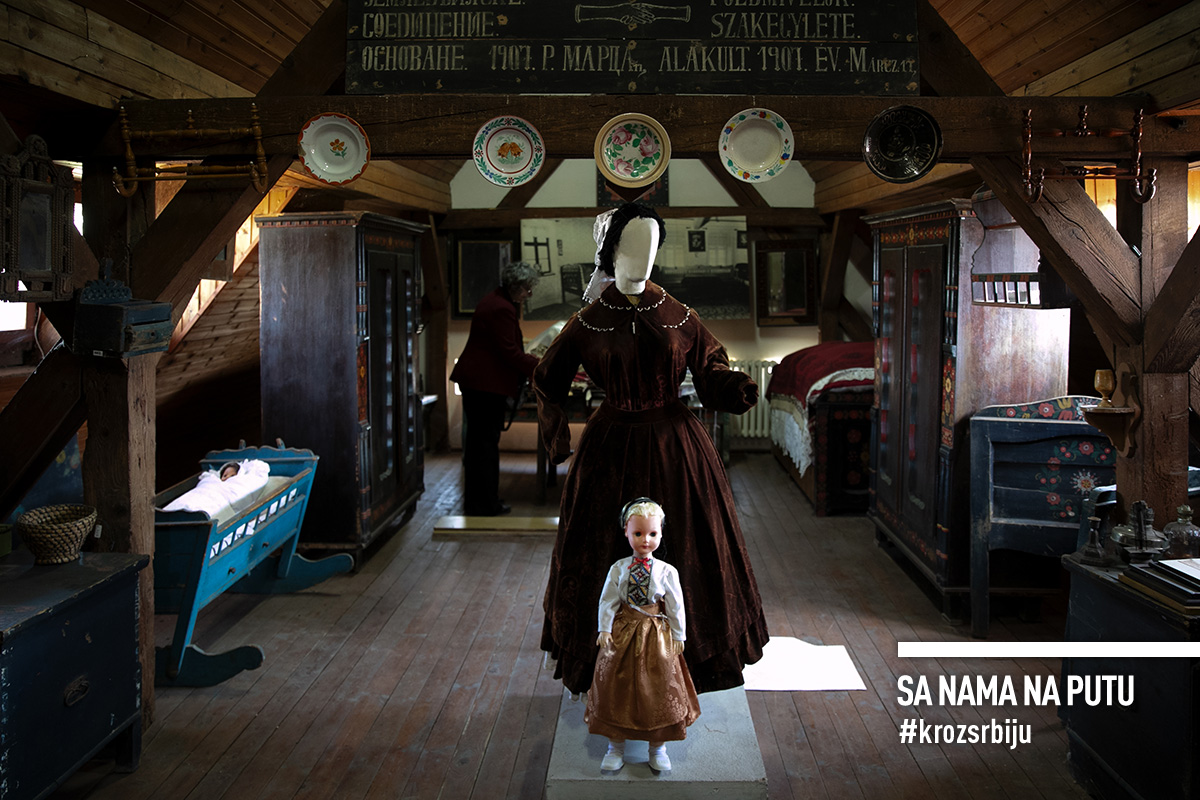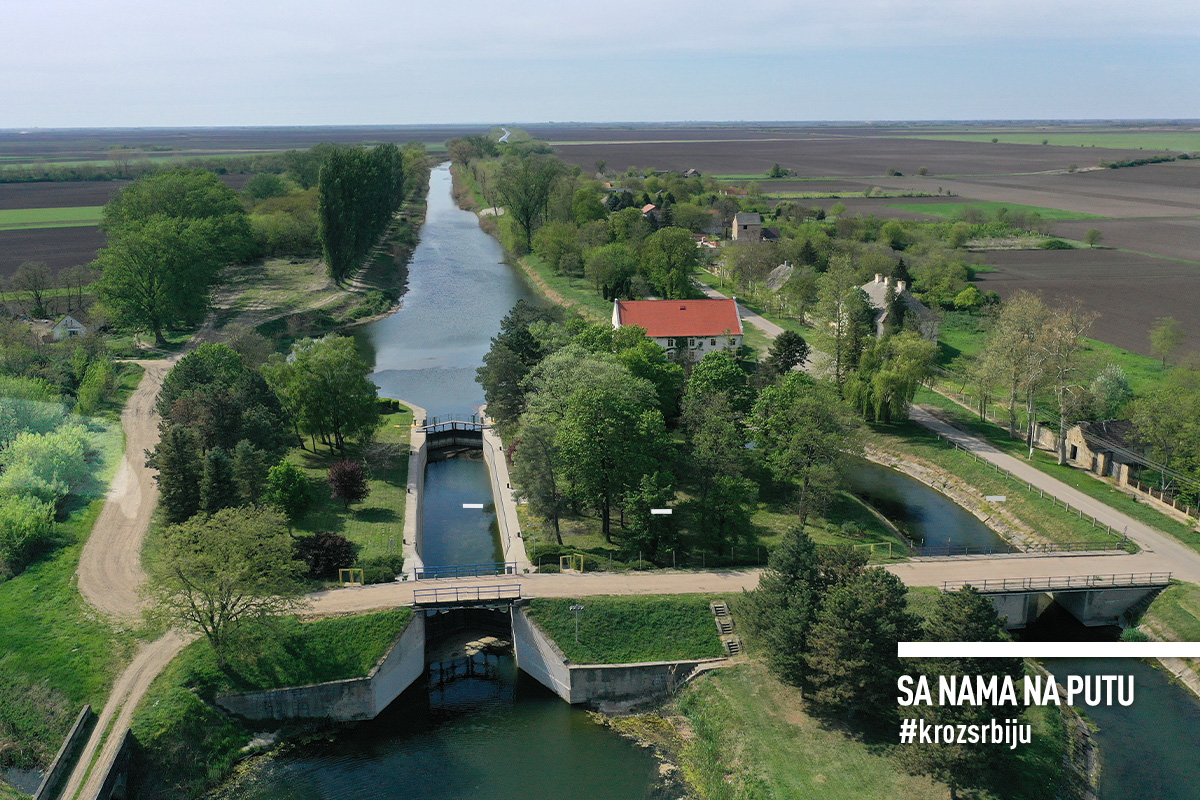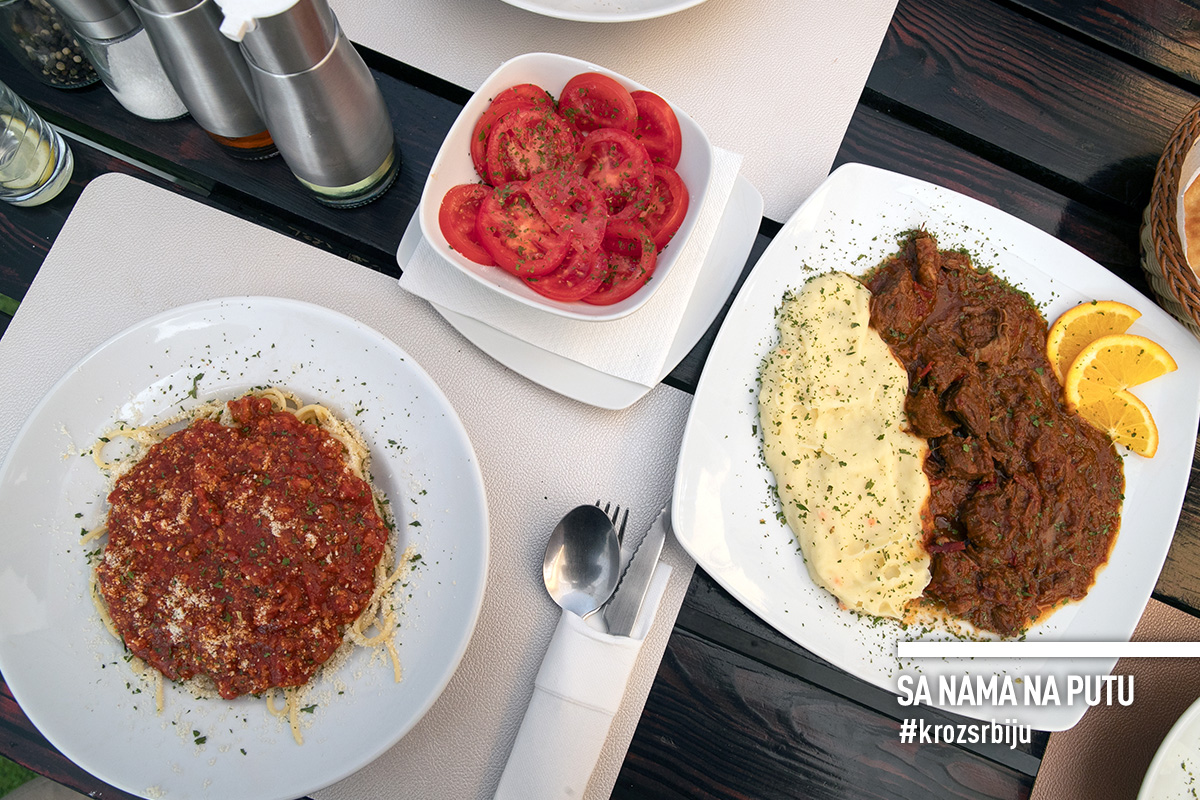After a few mountain adventures, it is time to explore some plains. Let us head to the heart of the peaceful, hospitable Bačka region to discover its famous canals, mingle with its diverse inhabitants. All that seasoned with the sound of engines and the scent of gasoline.

BECAUSE KULA IS A BEAUTIFUL TOWN
It is one of the oldest medieval settlements in Bačka. It was named, presumably, after a smaller earthen fortification, the tower, where at the beginning of the 16th century there was a Turkish military garrison and a smaller number of Serbs and Bunjevci ethnic group living around. The earliest written mention of Kula is in the inventory of Count Ferenc Velešni’s possessions from 1652. After it was annexed to the Habsburg Monarchy, in the middle of the 18th century, the town was inhabited by Hungarians, and later by Germans. Today, it is a distinct multi-ethnic environment, and the peculiarity of the municipality of Kula is the largest community of Rusyns in Serbia. It lies on the Great Bačka Canal. It is always the most pleasant and the most peaceful by the water. Morning coffee is being sipped in several cafes, the swans and ducks have already flown away, the fishermen are patiently waiting for their catch, and the cyclists are already going somewhere, but slowly, because there is no rush here, never. In the center there is a rather large green area, always alive, being the meeting place of all generations. There are cafes, restaurants, boutiques and various shops around. The diversity of the population is reflected in the religious buildings, so one may see in Kula the Orthodox Church of St. Mark from the middle of the 19th century, the Roman Catholic Church of St. George built in 1770 during the reign of Maria Theresa, and a Christian Adventist church. Take a walk to the narrow streets over the small bridges adorned with new, multi-colored facades.
In the vicinity are the Milisavljević winery, at the entrance to the village of Lipar, and the old abandoned wine cellars in Crvenka. They were founded at the end of the 18th century by the Danube Swabians. Of the 650 cellars dug into the Telečka Plain, 34 have remained, but they are neglected. If they were restored, they would undoubtedly be a unique tourist attraction of the region.

BECAUSE THE CARTINGS ARE BUZZING IN KULA WITH THE SUPPORT OF G-DRIVE FUEL
Tires squeal, brakes screech, engines roar, piercingly and continuously. Full throttle ahead ─ a real race against time. The fight for every inch of the winding 622-meter long track, coated with special asphalt for full enjoyment in sports driving, with, of course, all safety standards applied. The individual lap times and each driver’s total are printed on the large screen. A group of fans encourage their friends to chase down the stronger small cars and take a few more seconds off. Several bikers are carefully preparing mini versions of polished two-wheelers. They soon hit the track. They ride elegantly, bring their pets to their knees, and at the end a little exhibition as a greeting to the delighted onlookers. It requires a lot of skill, but also courage. Way to go people!
This is how the Kula Motodrome looks like in the early afternoon on a weekday. They say it gets even busier and more exciting on weekends. The hottest atmosphere is expected on May 12th, as well as the first week of September, when Kula hosts races of the Open Championship of the Serbian Sports Karting Association with the support of G-Drive fuel. Not only the best Serbian kart racers will compete, but also competitors from several countries in the region. Since sometimes the winner is decided by just a hundredth of a second, everything must be perfect, including the fuel. Karting may be a machine, but the old folk saying applies to it too: “Strength enters through the mouth.” To be top-notch, engines are fueled with premium G-Drive fuel – pure, powerful energy for accelerating to new records.
The final showdown is scheduled for the last weekend of September in Jagodina, where the winners will be announced in the overall standings and individual categories, receiving valuable G-Drive prizes and awards. Don’t forget that even the greatest champions need support, so attending one of the planned races, along with exploring the surroundings, can be a great weekend entertainment. Excitement is guaranteed, definitely.
RACE CALENDAR
- May 12, 2024 – Kula Motodrome
- June 2, 2024 – Autokomerc Belgrade
- June 30, 2024 – Karting Center Jagodina (right circuit)
- September 1, 2024 – Kula Motodrome
- September 29, 2024 – Karting Center Jagodina (left circuit)

VIDEO
5 Reasons to visit Kula and its surroundings
BECAUSE RUSKI KRSTUR IS THE CAPITAL OF RUSYNS IN SERBIA
The organized settlement of the Rusyns in Bačka began in the mid-18th century, and around 200 Rusyn families arrived in the then Great Krstur or Bački Krstur in 1751. After becoming part of the Kingdom of Serbs, Croats, and Slovenes (later Yugoslavia) in 1918, it changed its name to Ruski Krstur to highlight its significance for the majority population in the small town, about ten kilometers from Kula.
The most striking building is the Castle, a school building from 1913. It stands out from the surrounding architecture because it was not originally designed that way. Namely, the Austro-Hungarian Empire ordered the construction of two buildings simultaneously – one in the plains and the other in the mountainous region. However, due to a twist of fate, the plans got mixed up along the way, and a mountainous building arrived in Krstur. Thus, today it is adorned by a beautiful two-story building with extremely steep roofs. And how the plain project withstands mountainous conditions, we have not found out yet.
The Castle is now the seat of the National Council of Rusyns, but also a small museum. On the walls are pictures of graduates from Rusyn and Serbian classes, and there is an ethnographic collection in the attic. Displayed are photographs and documents, tools for old crafts, upholstery, pepper cultivation, and hemp processing, which was used for making various fabrics. There is also a room with furniture, beautifully painted wardrobes, traditional clothing items, and a girl’s dowry. If you visit, you will learn about the various types of ribbons and caps worn by women and how married women were recognized.
In front of the Castle is a playground for children, and a few steps further is the Rusyn Greek Catholic Church of St. Nicholas. Rusyns use the Cyrillic alphabet but they are not Orthodox Christians. The condition set by the Austro-Hungarian Empire for Rusyns to settle in this area was to acknowledge the Pope. The church was built in 1784, and its current appearance was obtained through renovations about fifty years later. Recently, it became a cathedral (cathedral church) because Ruski Krstur was elevated to the status of the Krstur Diocese. The town is a cultural and educational center for Rusyns in Serbia. They have a kindergarten, elementary school, and the only high school where Rusyn is the language of instruction.
A few kilometers away is the sanctuary of Vodica, where, according to tradition, the Virgin Mary appeared to two girls from Ruski Krstur in 1817. The church was built in 1859 on the site of a wooden chapel that was three years younger. It underwent thorough renovation at the beginning of the 21st century. In the beautifully landscaped courtyard, there is a well with water believed to have healing properties, a covered area for gathering of believers and guests, as well as accommodations because many pilgrims visit.
This fascinating visit is full of insights into the culture, faith, and customs of the Rusyns. Ethnic diversity is a great asset of Serbia, and getting to know the peoples with whom we share the same sky certainly implies better mutual understanding.

BECAUSE THE TWO-CENTURY OLD SLUICE GATE ADORNS MALI STAPAR
Fifteen kilometers from Kula is Mali Stapar (Little Stapar), a settlement in the village of Sivac, home to unusual industrial heritage. The sluice and spillway on the Great Bačka Canal were built in 1802. Of all constructed at that time, it is the only one still in operation. It measures 62.4 meters in length and 8.4 meters in width, with a double-winged iron gate. The last significant renovation was done in the late 1970s. The mill at the spillway was built in 1795, and the Technical Directorate building in 1898. It’s a beautiful structure that, unfortunately, cannot be entered. It offers a bit of history, more technology, and above all, nature. There is a well-kept park surrounding it, but fenced off, so everything can be observed from a distance. Along the canal stretches a promenade among tall, dense trees and a small, unkempt park. Deserted, there is not a soul in sight. Thus, for moments of solitude in awe-inspiring nature, accompanied by the croaking of frogs and chirping of birds, Mali Stapar is the perfect choice.

BECAUSE THE UMBRELLA RESTAURANT WARDS OFF HUNGER
We wanted to grab a bite by the water, but the restaurant by the canal, like some museums, is closed on Mondays. They directed us to the Umbrella restaurant. However, the initial letter of its name written at the entrance is A, not U, but do not be confused, you are in the right place. The interior is nicely decorated, but we opt for the spacious and pleasant garden area, with a grassy section where pavilions are set up to provide shade or shelter from the sun or rain. That is probably where the name comes from. The menu is extensive, offering a mix of local and international dishes, so we choose a bit of both – beef goulash with mashed potatoes, spaghetti Bolognese, and tuna pasta. Both the food and the service are excellent, without any complaints. It truly is a tasty experience “under the umbrella”.

